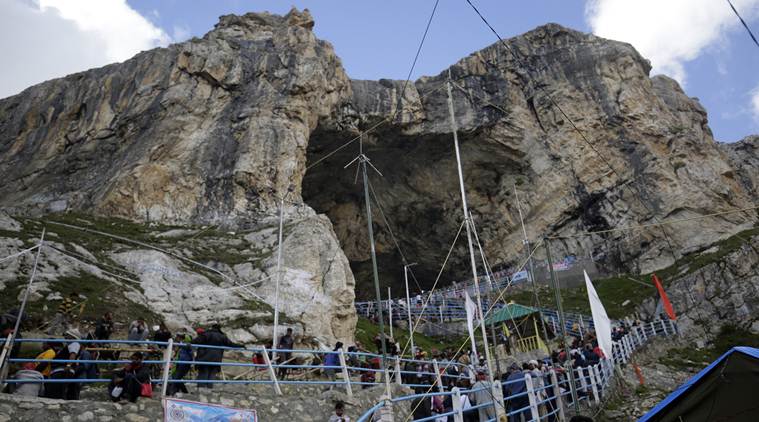 Amarnath Yatra 2018: While the yatra period has been increased from 43 to 60 days this year, Shrine Board officials and local porters say the number of pilgrims has decreased and they expect less work this year. (Photo: Praveen Khanna)
Amarnath Yatra 2018: While the yatra period has been increased from 43 to 60 days this year, Shrine Board officials and local porters say the number of pilgrims has decreased and they expect less work this year. (Photo: Praveen Khanna)
Climbing up the mountains, battling ice-cold wind and incessant rain, the first jatha finally walked up the stairs leading to the Amarnath cave. While some cried, some others broke into a wide grin at the sight of the yellow grilles guarding the iced stalagmite, or the Shivling.
Passport-size photographs, coins and currency notes were thrown inside the cave enclosure, and the crowd roared when they spotted a pair of pigeons (according to mythology, there were two pigeons when Shiv told the mantra of becoming immortal to Parvati at the Amarnath cave).
The prayers were offered to the Shivling, which shows signs of melting.
As pilgrims turned for the return trip, Shri Amarnath Shrine Board (SASB) officials have to do this up for 60 days. The Board has extended Amarnath Yatra period from last year’s 43 days to 60 days — between June 28 and August 26.
At the base camp, workers providing life support to the yatra have said it would be difficult to operate the 60-day period. Volunteers at the nine langars have made a similar claim.
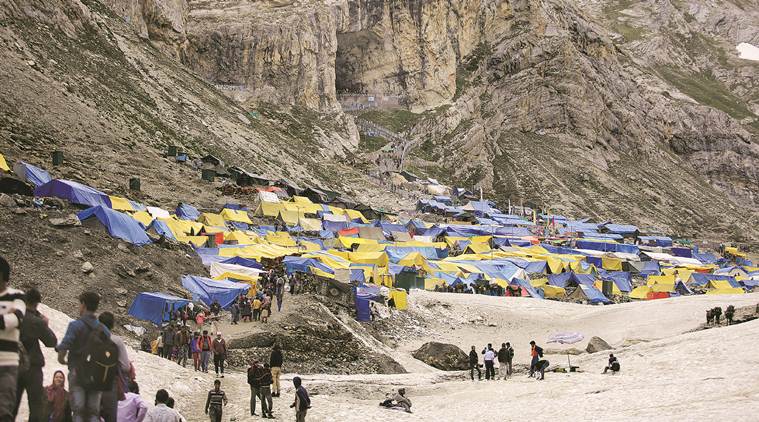 At the summit, three tents have been damaged by the wind, another torn by a bear. (Photo: Praveen Khanna)
At the summit, three tents have been damaged by the wind, another torn by a bear. (Photo: Praveen Khanna)
The reason: the stalagmite, or the Shivling, is expected to melt in the next two weeks, and the crowd is expected to dwindle down to a trickle then.
SASB authorities at the base camp have been informed about this, and officials said they are pulling out all the stops to make sure that people come in even in the extended 20-day period. “Last year, the Shivling had melted completely around June 15. I was the camp director even last year, and people did come to the base camp (after the stalagmite melted),” Sachin Jamwal, the base camp director, said.
This year also the Shivling is expected to melt around the same time. “We are doing everything we can to make sure the yatris come regardless,” he said.
Many people who earn their livelihood during the yatra period — pony riders, palanquin bearers and porters, among others — said even though the yatra period has been increased, the number of pilgrims has dwindled this year — at least going by the numbers in the first six days since June 28.
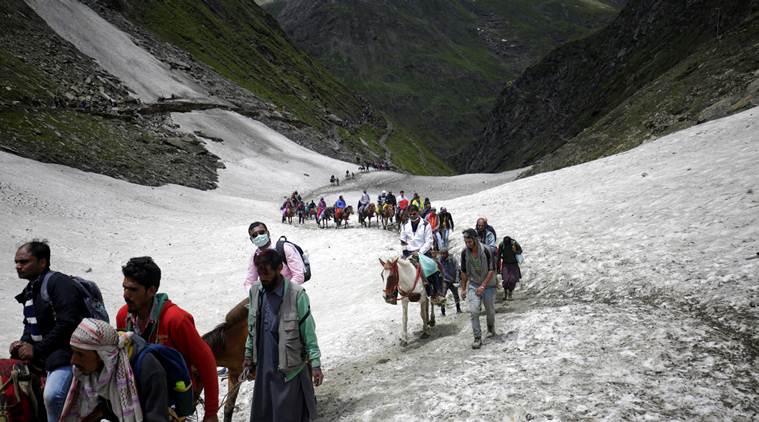 Pilgrims make their way to Sheshnag on the Amarnath Yatra. (Photo: Praveen Khanna)
Pilgrims make their way to Sheshnag on the Amarnath Yatra. (Photo: Praveen Khanna)
“Earlier, yatris rushed to the cave shrine and everybody found work. This time, fewer people have come, and many of us are fighting for work,” said Nasir Ahmad, 39, a pony rider at the base camp.
Shabbir Ahmad, who carries pilgrims on a palanquin on the 16-km steep trek from Baltal to the cave, and then runs rushes backs in the evening every day to carry more people, said, “The yatra goes through several phases. There is a good crowd in the first phase and then there is a cool-down period in between, which eventually picks up until the Shivling melts. How can we keep running 16 km for the next 40 days when pilgrims will arrive in smaller numbers once the Shivling melts?”
According to SASB’s figures, 1,007 pilgrims offered darshan on the first day of the yatra this year, compared to 6,097 last year. Even though the Shrine Board has claimed that rain played spoilsport this year, after the weather cleared, and pilgrims from Pehalgam and Jammu base camps were allowed to commence, 10,935 pilgrims had offered darshan at the base camp on June 1. In contrast, there were 14,935 people at the same time last year.
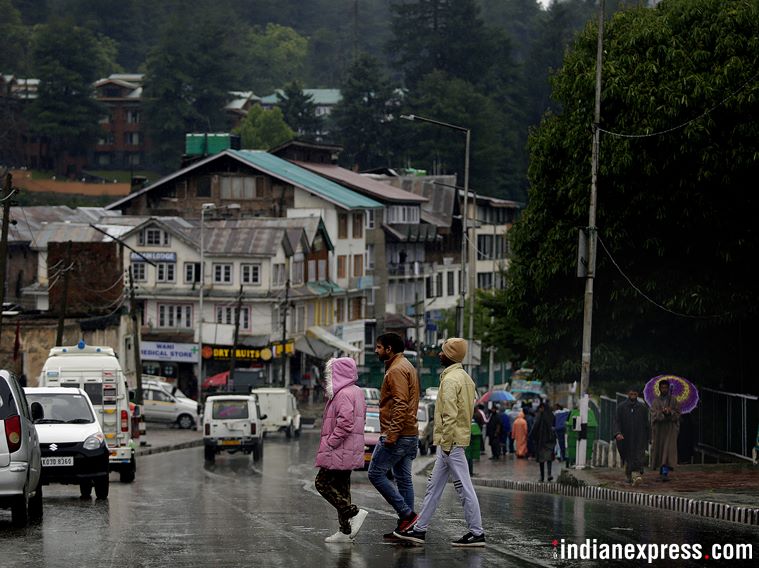 Pilgrims roaming around Pahalgam city. (Express photo by Praveen Khanna)
Pilgrims roaming around Pahalgam city. (Express photo by Praveen Khanna)
While Manik Kapoor, junior engineer at the base camp said that the the Governor had asked for improvement in sanitation this year, and that the sanitation budget has increased to Rs 1.5 crore, sanitation workers are facing problems cleaning the garbage. The entire area outside the washrooms section is filled with garbage from langars, along with heaps of rusted cans. “A lot of the garbage is previous year’s leftovers. It has still not been moved, and bears come and rip off the dumping grounds looking for food,” said Basheer Ahmad, a sanitation worker.”
“We will set garbage on fire after the yatra is over this year,” he said.
Those managing the mess also have a hard time this year. Around 50 langar trucks had been stopped at Lakhanpur by the administration citing security reasons. The nine langars are now operating at 20 per cent cost, officials said.”
“We are expected to exceed the budget cost of Rs 70 lakh due to the extra days,” Ankesh Garg, secretary of one such langar, said. “Unlike last year, we had to import large quantities of food, and there is a lack of dumping ground because of which the waste is dumped.”
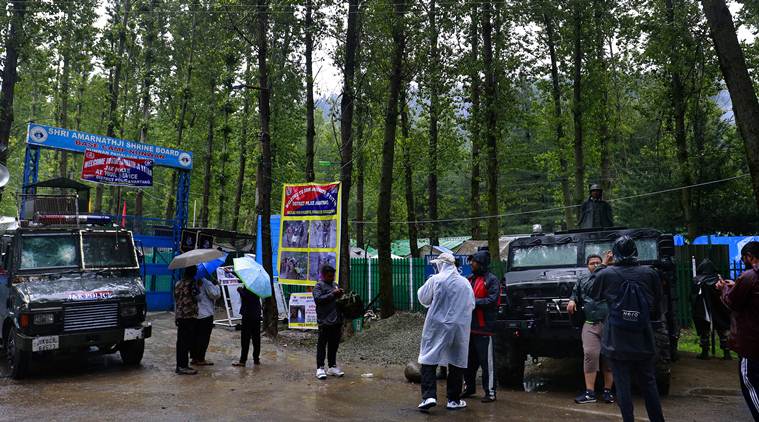 At Nunwan base camp in Pahalgam on Thursday. (Photo: Praveen Khanna)
At Nunwan base camp in Pahalgam on Thursday. (Photo: Praveen Khanna)
Garg said since many of them have to tend to other work, “it’s difficult to stay for more than one month”.
SASB officials were concerned before the monsoon set in when they found the Shivling beginning to melt. But the showers over the last few days have meant that the stalagmite did not melt drastically, and camp officials tried to reduce the pace of melting by ensuring that no source of heat makes its way into the enclosure — they even ensured that evening aartis are not held for long and lights are not kept inside.
With weather conditions improving, and around 15,000 pilgrims expected to reach the cave, officials now hope that the Shivling stays longer.